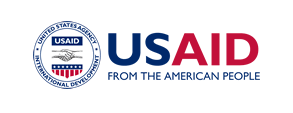The Health Policy Project ended in 2016. Work continued under Health Policy Plus (HP+) until 2022.
NEWS & VIEWS
Successful efforts to address HIV have long depended upon the energy and commitment generated through bonds of common purpose, trust, and shared hope within and connecting communities, civil society organizations, local health workers, national health policymakers, and the international development community. “Social capital” is a sociological concept referring to the value created by bonds of reciprocity and trust that bring people together into social networks, and which bind different social networks, to produce benefits for group members and the networks as a whole. Although it is a term that has been hotly contested within public health, broad consensus holds that social capital in its various forms can facilitate efforts to strengthen health systems and service delivery as well as increase resilience to HIV and its impacts.
The concept of social capital embraces the idea that the connections one has—be it with family, friends, community members, or power brokers—are assets that can be called upon for support and to leverage resources that create or maintain well-being. The importance of social capital for HIV responses can be seen at the individual level, for example, by reducing the isolation and internal stigma experienced by people living with HIV and improving adherence to treatment and health-seeking practices. Its impact is also evident at the systems level, whereby engagement of communities in policy formulation and monitoring improves responsiveness and accountability of HIV programs.
Three types of social capital have been defined; all three are important for community health and HIV responses, and all three can help support Getting to Zero. Bonding and bridging social capital refer to the resources that are generated and flow between “horizontal” networks. Bonding social capital comes from relationships between like individuals (e.g., groups of people living with HIV), while bridging social capital connects people who are alike but in different circumstances (e.g., connections between groups of HIV-positive people in one country or region with those in another). Bonding social capital can help attain zero new infections by, for example, enabling sex worker networks to distribute condoms and prevention advice to their peers, and zero discrimination by creating leadership platforms and legitimacy for people living with HIV to contest the stigma against them. Bridging connections are crucial for the influx of new ideas, resources, and energy across groups. For example, bridging social capital between HIV programmers and tuberculosis (TB) programmers can create the synergies needed to ensure that no one living with HIV dies from TB.
Linking social capital describes the value created by reciprocal bonds of trust between networks that are connected vertically—across lines of power and privilege. Examples of linking social capital include participatory policy processes that bring together people living with or affected by HIV, policymakers, health service providers, and other influential groups (e.g., police/law enforcement, religious leaders, media). This interaction can help ensure that decisions are transparent; policies and programs are responsive to communities; and resources are used effectively and targeted to those most in need—all hallmarks of good governance of health systems. Linking social capital is considered by some analysts to be the most crucial for creating sustainable improvements in health, because without viable linkages to those with power and influence, community groups may fail to get the traction they need to create the change they envision. Linkages between scales and levels provide needed resources and legitimacy for advocacy to reach the ambitious Getting to Zero goals.
This World AIDS Day marks a critical moment in the history of the HIV response. The response faces a grave funding crisis, with potential for an unprecedented contraction in global HIV financing for the next ten years. This crisis will require creative thinking and new approaches for tackling HIV and strengthening health systems, such as the development of strategic alliances that transcend narrow sectoral interests and embrace and support the ability of communities and civil society to respond in their own right. Through the thoughtful application of social capital, communities and civil society groups can hold leaders to account and demand that they develop policies and programs that create the conditions for improved health, HIV resilience, and Getting to Zero.
Dr. Jessica Ogden is a social anthropologist with specialization in public health. Through the Health Policy Project, Dr. Ogden is researching the role of social capital as a key component of health systems strengthening and policy processes.
What's New
- Something to Build On: “Innovation Exchange” Celebrates the Health Policy Project’s Close and a New Beginning
- What Will it Take for Tanzania to Achieve ART Targets and Ensure Long-Term Sustainability of the HIV Response?
- Helping Kenya’s County Leaders Advocate for Increased Health Investments
- HPP Holds Working Meeting on Ensuring Responsible PEPFAR Transitions for Key Populations
- Health Policy Project Celebrates 2016 International Women's Day
- HPP Staff Participate in White House Conference on HIV Stigma Reduction

